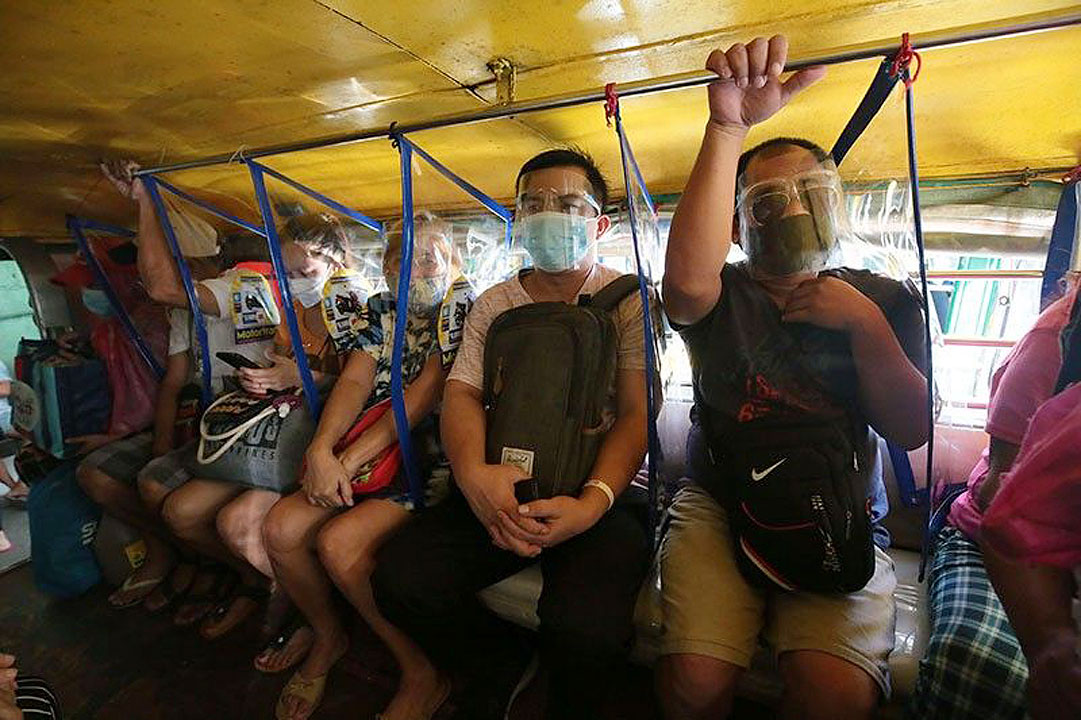THE TRANSPORTATION department said Wednesday that it considers a move to increase capacity in public transport to be “safe,” citing studies performed overseas.
“(May) mga katibayan na ligtas pa rin po ang ating mga pasahero… sa kabila ng COVID-19, kahit po taasan natin ang capacity (There is evidence of passenger safety even with COVID-19 present if capacity is raised),” Transportation Assistant Secretary Eymard D. Eje, the officer-in-charge general manager of Metro Rail Transit Line 3, said at a virtual briefing.
He said that in Germany, only 0.2% of traceable infections were linked to transport. He estimated the chance of contracting coronavirus disease 2019 (COVID-19) while commuting at 0.01%, assuming health protocols are observed.
Transportation Assistant Secretary Goddes Hope O. Libiran said a study of data from the Philippines, Indonesia, Thailand, Japan, Taiwan, Singapore, China, Australia, Vietnam, and Malaysia indicated “that public transport capacity has no significant correlation with the number of COVID-19 cases.”
“Evidence suggests that a high vaccination rate prompts an increase in public transport capacity,” Ms. Libiran also noted.
More than 80% of Metro Manila’s population is now fully vaccinated against the virus.
Independent pandemic monitor OCTA Research has said that it still backs limiting public transport to fully-vaccinated passengers.
“’Yung recommendation naming i-restrict sana iyan to fully vaccinated na passengers pero sa ngayon naman kung sa Metro Manila ay nasa 96% na tayo ng may first dose, it means siguro na iyong adults natin malapit na… sa 100% fully vaccinated (Our recommendation is to restrict public transport to the fully vaccinated. Right now in Metro Manila, 96% have received a first dose, which means nearly 100% of adults are fully vaccinated),” OCTA Research fellow Fredegusto Guido P. David said at a virtual briefing Tuesday.
The Health department said Tuesday that it detected 520 new cases of the Delta variant of COVID-19.
“We have an additional 520 Delta cases, additional 83 Beta, and 64 (cases of) Alpha variant,” Alethea de Guzman, director of the Health department’s Epidemiology bureau, said at an online briefing.
But she said COVID-19 infections have declined by 49% nationwide in the past two weeks.
The daily infection tally declined by 14% week on week to 4,183 cases in the Oct. 26-Nov. 1 period, following a 26% decrease in the first few weeks of October.
The passenger capacity for rail lines and selected public utility vehicles (PUVs) operating in Metro Manila and nearby provinces will be increased from 50% to 70% starting Thursday, Nov. 4.
PUVs allowed to increase their capacity are buses, jeepneys, and UV Express vans.
The Land Transportation Franchising and Regulatory Board said that plastic barriers inside jeepneys are no longer required nationwide, “provided that proper physical distancing is observed, and passengers practice health and safety protocols to prevent the spread of COVID-19.”
The transport regulator believes that the increase in passenger capacity will help cushion the impact of the pandemic and the recent hike in fuel prices on the livelihood of PUV drivers and operators. — Arjay L. Balinbin
